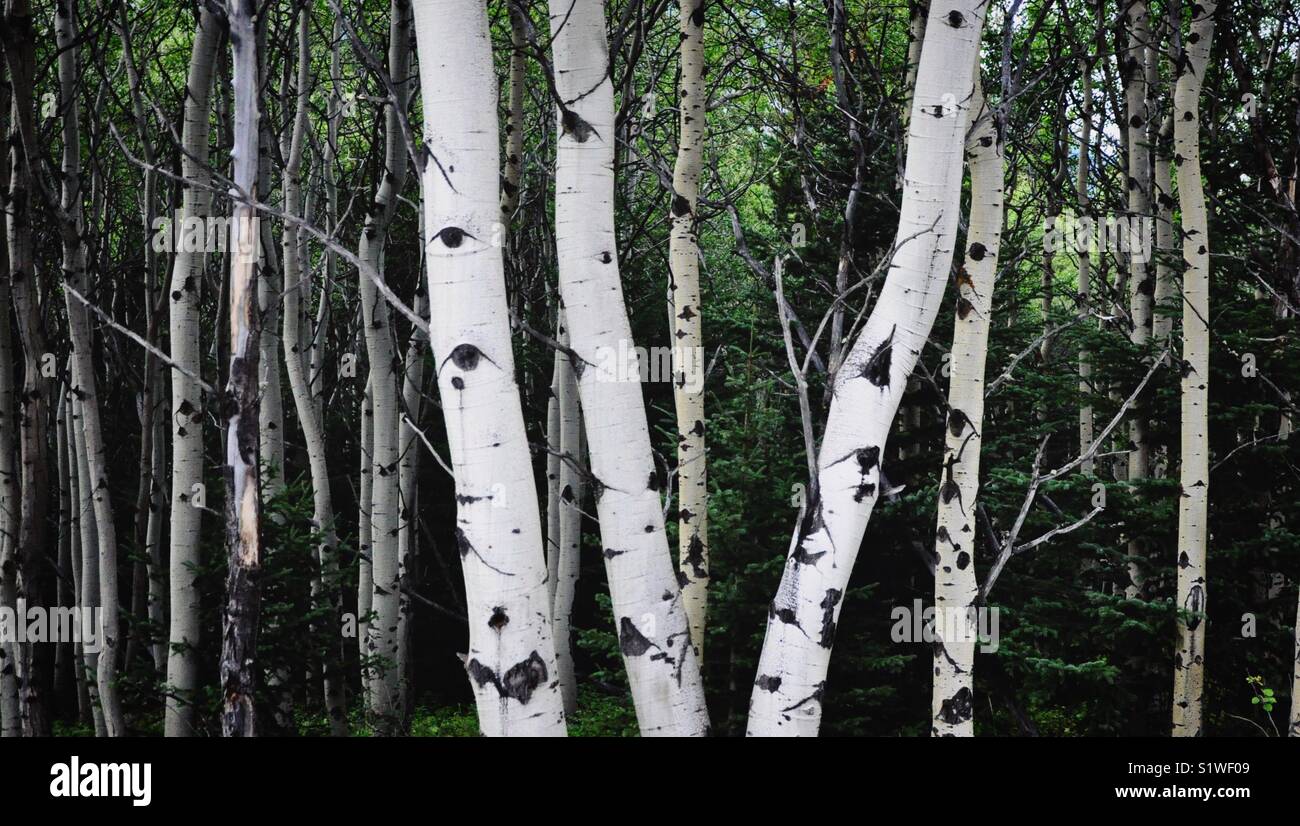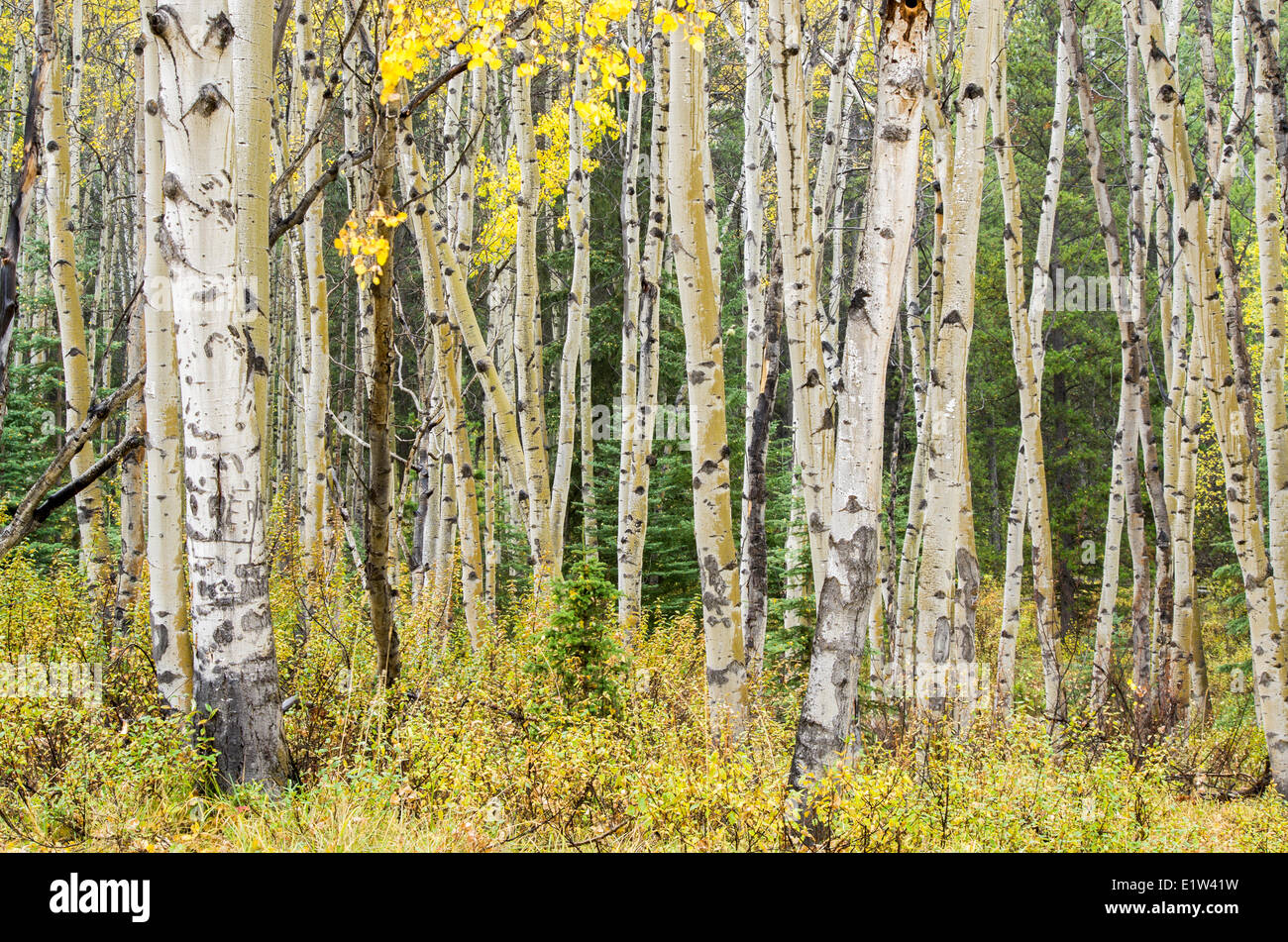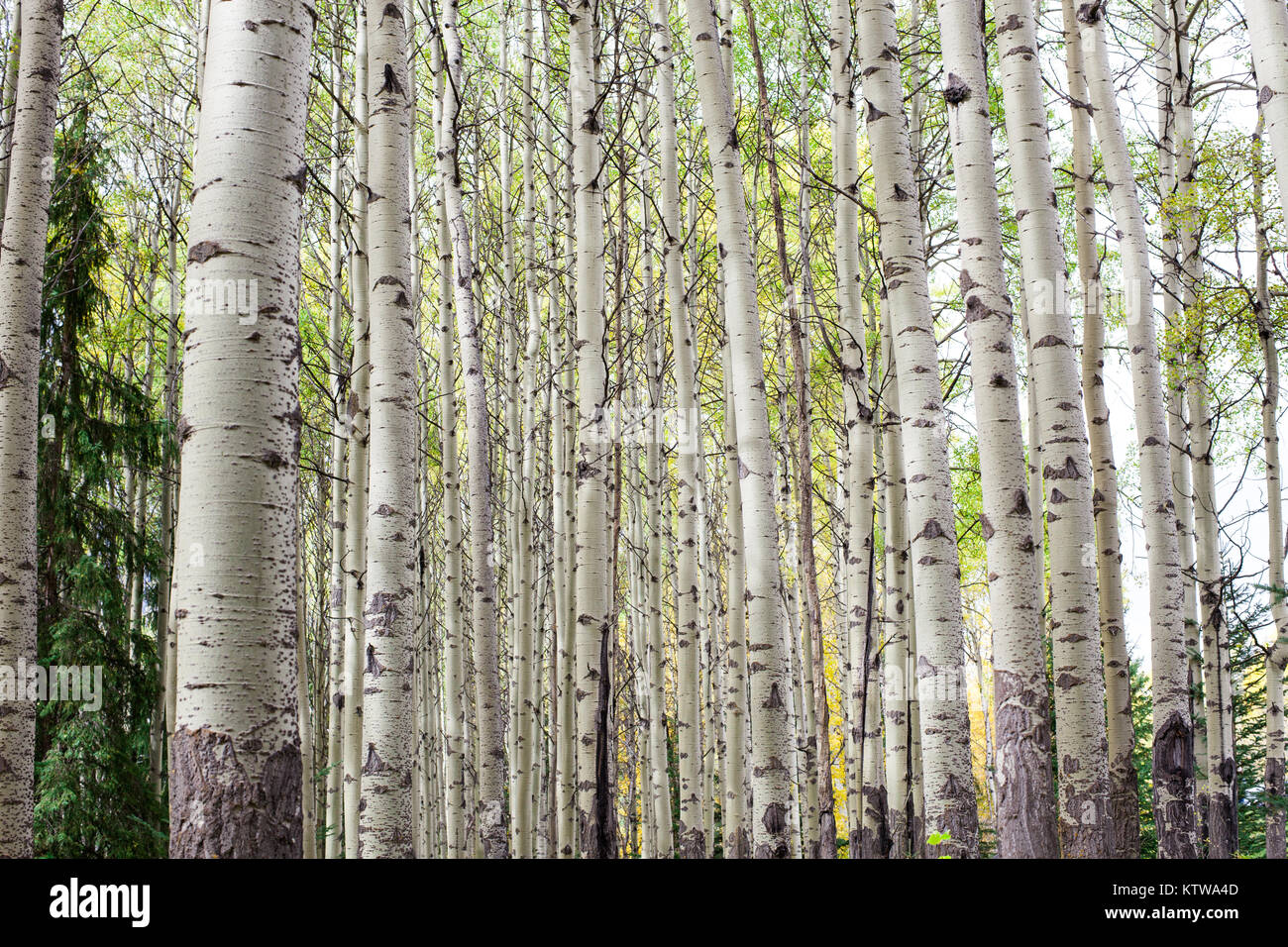
Birch trees in the forest in Alberta, Canada Stock Photo Alamy
The tree is native to the eastern U.S., from Maine to northern Georgia. Regionally, the cherry birch may be called by other common names, including black birch, sweet birch, mahogany birch, Virginia roundleaf birch, or spice birch. USDA Hardiness Zones: Moist, well-drained loams, acidic, sandy, rocky.

Silver Birch trees (Betula pendula) in a forest, Alberta, Canada Stock
#1. Oak Tree View Price of Tree Popular Varieties: White, English, Northern, Bur Why Grow Oak Trees in Alberta? Fast-Growing: The oak tree is one of the fastest growing trees in Alberta. It can grow up to 80 feet tall and only takes a few short years to provide shade for your yard. Low-Maintenance:
Forest Of Birch Trees, Alberta, Stock Photo
Betula papyrifera ( paper birch, [5] also known as (American) white birch [5] and canoe birch [5]) is a short-lived species of birch native to northern North America. Paper birch is named after the tree's thin white bark, which often peels in paper -like layers from the trunk.

Birch Trees Alberta Canada Stock Photo Alamy
Nature season background. RF 2C27549 - A Birch Forest of Banff National Park in Canada RM JWTWX5 - Beautiful Silver Birch Trees with Clear Blue Sky in Woodland at Kananaskis Alberta Canada RF R84HFX - Man hiking through a grove of Water Birch trees along the Patricia Lake Circle trail near Jasper, Jasper National Park, Alberta, Canada.

White Birch trees in Jasper National Park, Alberta, Canada Stock Photo
Birch trees (genus Betula) are flowering medium-sized deciduous trees with thin papery bark and egg-shaped pointed leaves. Birch trees have spectacular fall colors that can be golden yellow, vibrant orange, or fiery red. Common birch trees get their names from the bark's distinctive colors, which can be white, silver, black, gray, or yellow.

Birch Trees In Late Fall. Hillsdale Meadows Banff National Park Alberta
Balsam Fir. Balsam Firs or Abies balsamea only accounts for three percent of Alberta's softwood. These Canadian trees tend to grow between 14 and 20 meters. Their leaves are flat and needle-like and grow between 15 and 30 mm in length. The cones ripen in September and release their seeds.

Birch trees alberta canada hires stock photography and images Alamy
At Bow Point Nursery, we are one of the only nurseries that practices bare-rooting, a traditional practice used by homesteaders to ensure a species will thrive in Alberta's climate. These trees are adapted to our region and will last through all that Southern Alberta can throw at them.

Birch trees alberta canada hires stock photography and images Alamy
White Birch (Betula papyrlfera) Shrubs Willow (Sallx spp.). . Beaked Hazelnut (Corylus cornuta) Swamp Birch (Betula pumlla). 32 of the most common Alberta trees and shrubs. A key was developed to allow quick and easy access to this material. A chart describing the response of the trees and shrubs to herbicide and mechanical treatment.

Stands of Birch Trees. Jumping Pound Demonstration Forest Natural Area
There's a quick way to do it. Use the Guide to the Common Native Trees and Shrubs of Alberta key to help you quickly master the art of identifying trees: Leaf type: Broadleaf (deciduous trees), Leaf arrangement: Simple: one main leaf per stem. Compound: many small leaves (called leaflets) per stem. An example of a simple leaf arrangement

Birch Trees Autumn Colors Fort McMurray Alberta Stock Photo Image of
Common coniferous tree species found in the Green Area of Alberta 1The Alberta Legislative Assembly designated the lodgepole pine as the province's official tree in 1984. Common deciduous tree species found in the Green Area of Alberta Detailed descriptions about each tree species (off-site) (www.abtreegene.com/trees.html)

types of birch trees in alberta Clelia Caraballo
A database that provides information on more than 200 native tree and shrub species, and on almost 300 insects and 200 diseases found in Canada's forests. Skip to main content; Skip to "About government". western white birch to 35 m, with peeling orange-white bark, and northwestern white birch to 20 m, with light reddish-brown bark; Diameter.

Stands of Birch Trees. Jumping Pound Demonstration Forest Natural Area
The most common deciduous trees found in the boreal forest include white birch, trembling aspen and balsam poplar. All boreal tree species must be resilient and tolerant of cold temperatures, poor soil quality and fires (WWF 2008). Coniferous trees are very well adapted to the climatic conditions.

birch trees, Canada, Alberta Stock Photo Alamy
Yellow birch (Betula alleghaniensis): This tree is native to forests of the northeast U.S. and is also known as the swamp birch due to the fact that it is often found in marshy areas. It is the.

I love when the lodgepole pines birch trees at the top of the
Birch (Betula), genus of trees and shrubs of birch family (Betulaceae). About 50 species are found in Arctic and northern temperate regions worldwide This was the birch that the native people found so useful for canoes and utensils. Shown with cones and flowers (artwork by Claire Tremblay).

Silver birch trees at Wedge Pond, Kananaskis, Alberta, Canada Stock
The cutleaf weeping birch tree requires plenty of moisture, and the tree is recommended for each region of Alberta. Birch trees have shallow roots and require plenty of water to stay green and.

Birch trees in northern Alberta, Canada forest near Slave Lake Stock
Giant Anise Hyssop. Anise Hyssops are plants native to Alberta and can be seen blooming in mid-summer. The flowers are purple with a tubular shape, making them a lovely addition to any garden. These native plants reach 6 to 12 inches tall and have a flowering period lasting from July to September.